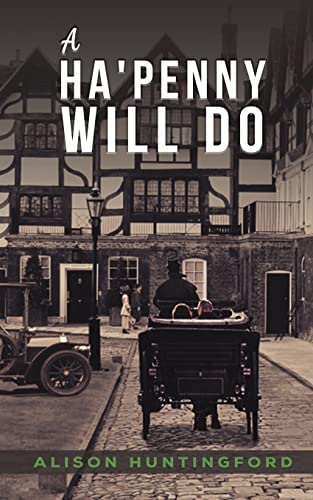A Ha’penny Will Do
This family history is set mainly in London from 1879 to 1920. At its center is the fictive journal of Huntingford’s great-grandmother, the beautiful Kate McCarthy. Kate is born in Cork, but her father’s death forces the family to emigrate to England when she is 12, and from then on, she must work to survive. After enduring various miserable “service” jobs, she escapes into marriage with the charming but abusive Will Duffield. Poverty follows the family downward from marginal respectability to the squalor of slum living, where cholera takes their first two sons and diphtheria afflicts the later ones. In 1913, the two oldest boys join the army; their letters continue the family story as they fight in WWI.
The hope and despair of Kate’s journal is skillfully intertwined with the reminiscences of her next-youngest son Joe (Huntingford’s grandfather). In one of the best of these juxtaposed narratives, Kate’s reflections on her coming marriage in 1888 are followed by Joe’s recollections of moving into Newington Workhouse, where all the family except Will are forced to live in 1905-07 while he pays off the debts he has incurred. Kate’s dreams at 21 are thus contrasted with the reality of her life at 38, seeing her five sons torn from her by workhouse routines and compulsory boarding school.
Huntingford’s indefatigable research has allowed her to discover ancestors lost to family legend and London addresses lost to slum clearance and WWII bombing. Although the “voice” of Kate’s journal is 21st-century, the portrait of her poverty is convincing. The very sameness of the family’s troubles—drink, lost jobs, abuse, another downhill move—makes for repetition rather than plot, but Huntingford’s retrieval of ancestors whose lives would otherwise be forgotten should encourage others to look at their families’ pasts for moving fictional portrayals.










